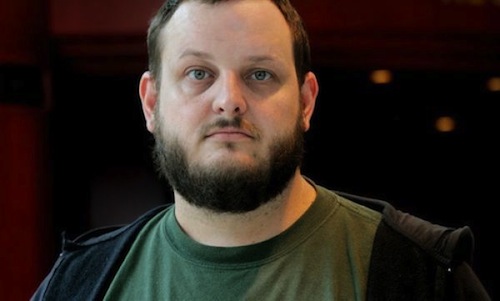
By Lloyd Gedye
It is a perversion of SA’s broadband sector that wireless players punch above their weight. More than 21m South Africans use a wireless connection to access the Internet — with a tablet, smartphone or dongle — whereas fewer than 800 000 subscribe to an ADSL broadband connection.
This is according to the Organisation for Economic Co-operation and Development, which released its latest statistics on broadband this month. This means that for every 100 South Africans there are 1,6 ADSL broadband connections and 42,5 wireless connections.
This perversion can be laid squarely at the feet of Telkom. The company’s excessive pricing has allowed the mobile operators — the technological offerings of which should be much more expensive than ADSL — to compete successfully. But the massive uptake of wireless broadband has led to capacity problems as players such as Vodacom, Cell C, MTN, 8ta, Neotel and iBurst try to roll out networks that can carry all this data.
One problem is the legacy networks of some of these players. The older networks that use 2Mbit/s E1 links supplied by Telkom to carry traffic are no longer adequate and there is a need for faster, high-capacity transmission links. Vodacom said in a statement earlier this year that it had about 2 000 21Mbit/s HSPA+-enabled towers but only a third of these had adequate transmission capacity to support the higher speeds.
Another problem is the delay in site acquisition and municipal permits that are required for expanding the network. Many of SA’s major mobile players have complained about this. These capacity problems have played into the hands of newer entrants, such as Cell C and 8ta, which have shaken up the wireless broadband market with great offerings in the past two years. But many industry players insist that these are below cost and not sustainable in the long term.
So how can wireless broadband be made more affordable? One answer lies in a process launched by the Independent Communications Authority of SA (Icasa) last week. For years the current players have been calling on Icasa to sort out its allocation of spectrum. What this means is that some time next year spectrum in the 2,6GHz and 800MHz bands will be licensed to successful applicants.
The spectrum in the 2,6GHz band is ideal for high-density urban areas and will enable the next generation of broadband network based on a technology called long-term evolution (LTE). The 800MHz band can also be used for the roll-out of an LTE network but, unlike the 2,6GHz band, it is better suited to rural areas and this is clearly what Icasa is targeting.
The process Icasa announced last week envisions new entrants being licensed for the new spectrum by the end of April next year. But with the 800MHz spectrum there is a catch — this will be freed up only once the migration from analogue to digital television has taken place. This was meant to be completed by the end of 2013, a date industry players say SA has no chance of meeting.
In fact, some in the broadcasting sector who have been following the process say that the digital terrestrial television migration process has not even reached the starting gate, with set-top box standards and multiplex capacity, which are seen as the building blocks for this process, still not finalised. Some stakeholders have even described the digital terrestrial television switchover as a “complete quagmire”.
Icasa councillor Marcia Socikwa said last week that the process surrounding the 800MHz bands was to allow successful parties to begin planning for the spectrum being freed up.
It is clear that Icasa is hoping that this new model will facilitate services in the rural areas, a key policy of the department of communications, which is aiming for universal coverage by 2019. But with the departmental process way behind schedule, it is unrealistic to expect rapid development on this front, making it highly unlikely the 2019 deadline will be met.
Wireless broadband players are also likely to be concerned about a number of elements in the Icasa spectrum allocation process. The authority has decided to offer access to the spectrum on a wholesale open-access model, in which operators share networks and compete at the retail level. But Icasa has stipulated that wholesale network providers will not be able to compete at a retail level.
Other tough roll-out obligations include a 70% geographic coverage target within five years for players licensed for both spectrums, 50% of which must exclude Gauteng, Cape Town and Durban. Those players licensed for the 2,6GHz band will have to meet a 50% population coverage target within four years.
Stakeholders present at the Icasa press conference last week, at which the spectrum allocation process was announced, referred to these targets as “ambitious”, which cast doubt on whether they are achievable. Vodacom’s feathers are also likely to have been ruffled by the announcement of the black empowerment equity requirements for the process. Applicants have to have 30% of their equity in the hands of “historically disadvantaged individuals” and Vodacom will fall well short of this.
When asked whether players such as Vodacom would be allowed to apply for spectrum through a special purpose vehicle to get around this, Socikwa said Icasa would not encourage this, especially if it amounted to fronting. Fast, cheap wireless broadband is within grasp, the technology and the spectrum are there, but all eyes are on Icasa to see how it manages the allocation and whether it will mean that consumers get more bang for their buck.
- Lloyd Gedye is a senior business journalist at the Mail & Guardian
- Visit the Mail & Guardian Online, the smart news source
- Subscribe to our free daily newsletter
- Follow us on Twitter or on Google+ or on Facebook
- Visit our sister website, SportsCentral (still in beta)




